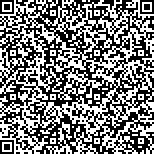附件
|
| 引用本文: | 刘海平,叶少文,杨雪峰,张良松,钟国辉,何勇平,巴桑,李钟杰.西藏尼洋河水生生物群落时空动态及与环境因子关系:3.大型底栖动物.湖泊科学,2014,26(1):154-160. DOI:10.18307/2014.0119 |
| LIU Haiping,YE Shaowen,YANG Xuefeng,ZHANG Liangsong,ZHONG Guohui,HE Yongping,BA Sang,LI Zhongjie.Spatio-temporal dynamics of aquatic organism community and their relationships to environment in Niyang River, Tibet:3. Macrozoobenthos. J. Lake Sci.2014,26(1):154-160. DOI:10.18307/2014.0119 |
|
| |
|
|
| 本文已被:浏览 10210次 下载 4671次 |

码上扫一扫! |
|
|
| 西藏尼洋河水生生物群落时空动态及与环境因子关系:3.大型底栖动物 |
|
刘海平1,2,3, 叶少文2, 杨雪峰4, 张良松5, 钟国辉1, 何勇平6, 巴桑1, 李钟杰2
|
|
1.西藏大学农牧学院, 林芝 860000;2.中国科学院水生生物研究所淡水生态与生物技术国家重点实验室, 武汉 430072;3.中国科学院大学, 北京 100049;4.锡林浩特市第六中学, 锡林浩特 026000;5.福建省水产技术推广总站, 福州 350003;6.西藏自治区林芝地区农牧局, 林芝 860000
|
|
| 摘要: |
| 于2008-2009年按照季节调查了西藏地区尼洋河大型底栖动物群落的组成和丰度,并运用多元统计方法定量分析了大型底栖动物的空间和季节变化特征及其与主要环境因子之间的关系.结果显示,石蚕幼虫、萝卜螺以及摇蚊幼虫是尼洋河主要的大型底栖动物,另外,随着海拔的升高,尼洋河大型底栖动物总丰度呈现降低趋势;Duncan检验法显示,物种总丰度在各采样点之间均不存在显著性差异;PCA方法显示,对于采样点,大型底栖动物总丰度最大值和最小值分别出现在采样点Ⅳ和采样点Ⅱ,对于季节,大型底栖动物总丰度最大值和最小值分别出现在秋季和冬季;CCA方法显示,可分别从尼洋河中上游和中下游两个河段来概括尼洋河大型底栖动物与环境因子之间的关系;CART模型显示,从11项环境因子筛选了4项环境因子用以解释它们与大型底栖动物总丰度之间的相互关系,这4项环境因子包括矿化度、总磷、海拔和季节,建议加强对大型底栖动物及这些环境因子的关注,保障尼洋河水域生态环境的可持续发展. |
| 关键词: 西藏 尼洋河 大型底栖动物 时空动态 主成分分析 典范对应分析 分类回归树 |
| DOI:10.18307/2014.0119 |
| 分类号: |
| 基金项目:西藏科技厅地区基金重点项目资助 |
|
| Spatio-temporal dynamics of aquatic organism community and their relationships to environment in Niyang River, Tibet:3. Macrozoobenthos |
|
LIU Haiping1,2,3, YE Shaowen2, YANG Xuefeng4, ZHANG Liangsong5, ZHONG Guohui1, HE Yongping6, BA Sang1, LI Zhongjie2
|
|
1.Agricultural and Animal Husbandry College of Tibet University, Linzhi 860000, P. R. China;2.State Key Laboratory of Freshwater Ecology and Biotechnology, Institute of Hydrobiology, Chinese Academy of Sciences, Wuhan 430072, P. R. China;3.University of Chinese Academy of Sciences, Beijing 100049, P. R. China;4.NO. 6 Middle School Xilinhot, Xilinhot 026000, P. R. China;5.Fujian Marine Products Technical Promotion Station, Fuzhou 350003, P. R. China;6.Tibet Autonomous Region Linzhi Area Agricultural and Animal Husbandry Bureau, Linzhi 860000, P. R. China
|
| Abstract: |
| We have investigated the constitution and abundance of macrozoobenthos in Niyang River, the branch of the Yarlung Zangbo River, Tibet, based on season from 2008 to 2009, and taken quantitative analysis to study spatio-temporal characteristics of phytoplankton and their corresponding to environment using multivariate statistics method. The results are as follows:Firstly, the main macrozoobenthos in Niyang River are phryganea larvae, Radix sp., chironomidae larvae. Secondly, based on the method of Duncan test method, there is no significant difference among four sampling sites and seasons as for total abundance, in addition, total abundance of the macrozoobenthos in Niyang River is descending with the elevation ascending. Thirdly, based on the PCA method, as for the sampling sites, the maximum and the minimum total abudance for the macrozoobenthos appear in sampling site Ⅳ and sampling site Ⅱ respectively, as for the seasons, the maximum and the minimum total abudance for the macrozoobenthos appear in the autumn and the winter respectively. Fourthly, based on the CCA method, the relationship between the environmental factors and the macrozoobenthos could be described as two reaches separately, which are the middle-upper reaches and the middlelower reaches. Last but not least, the paper chooses four factors among eleven environmental factors to explain their relationship with total abundance of macrozoobenthos, the four factors are total dissolved solids, total phosphorus, elevation, and season. The paper also suggests paying close attention to macrozoobenthos and the environment factors mentioned above owing to their important indication function, in order to warrantee the sustainable development of Niyang River aquatorium ecology. |
| Key words: Tibet Niyang River macrozoobenthos spatio-temporal dynamic PCA CCA CART |
|
|
|
|